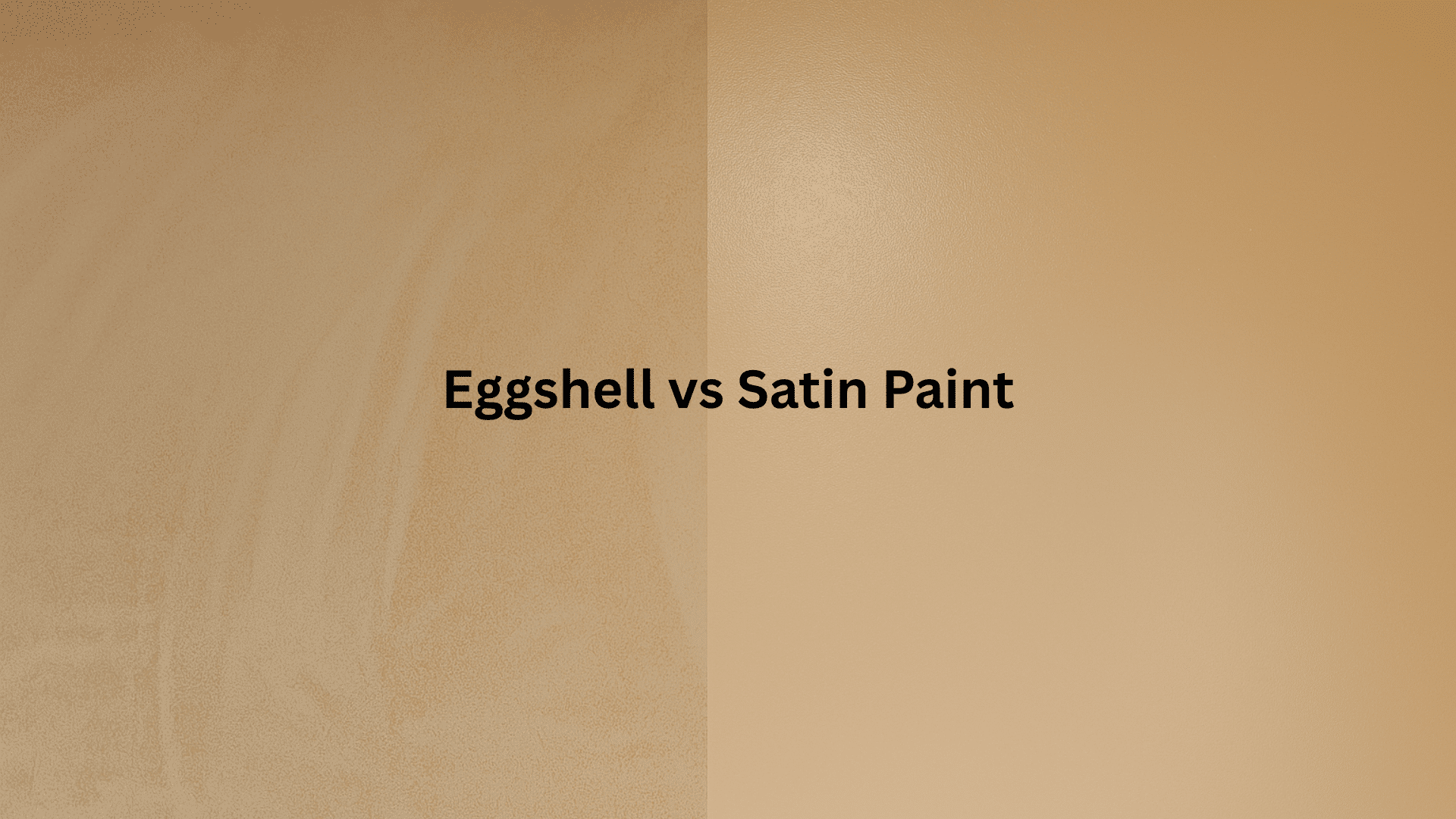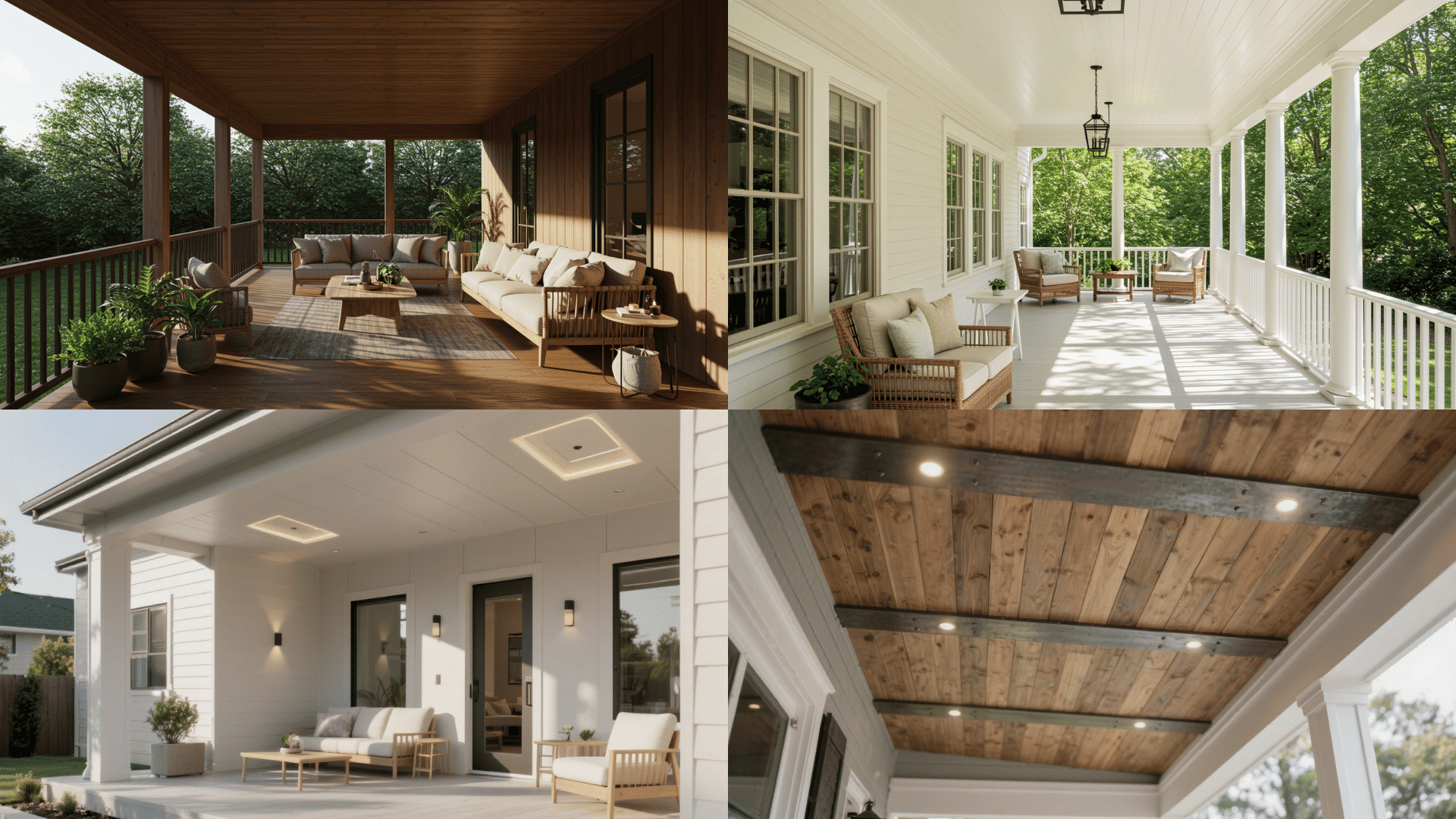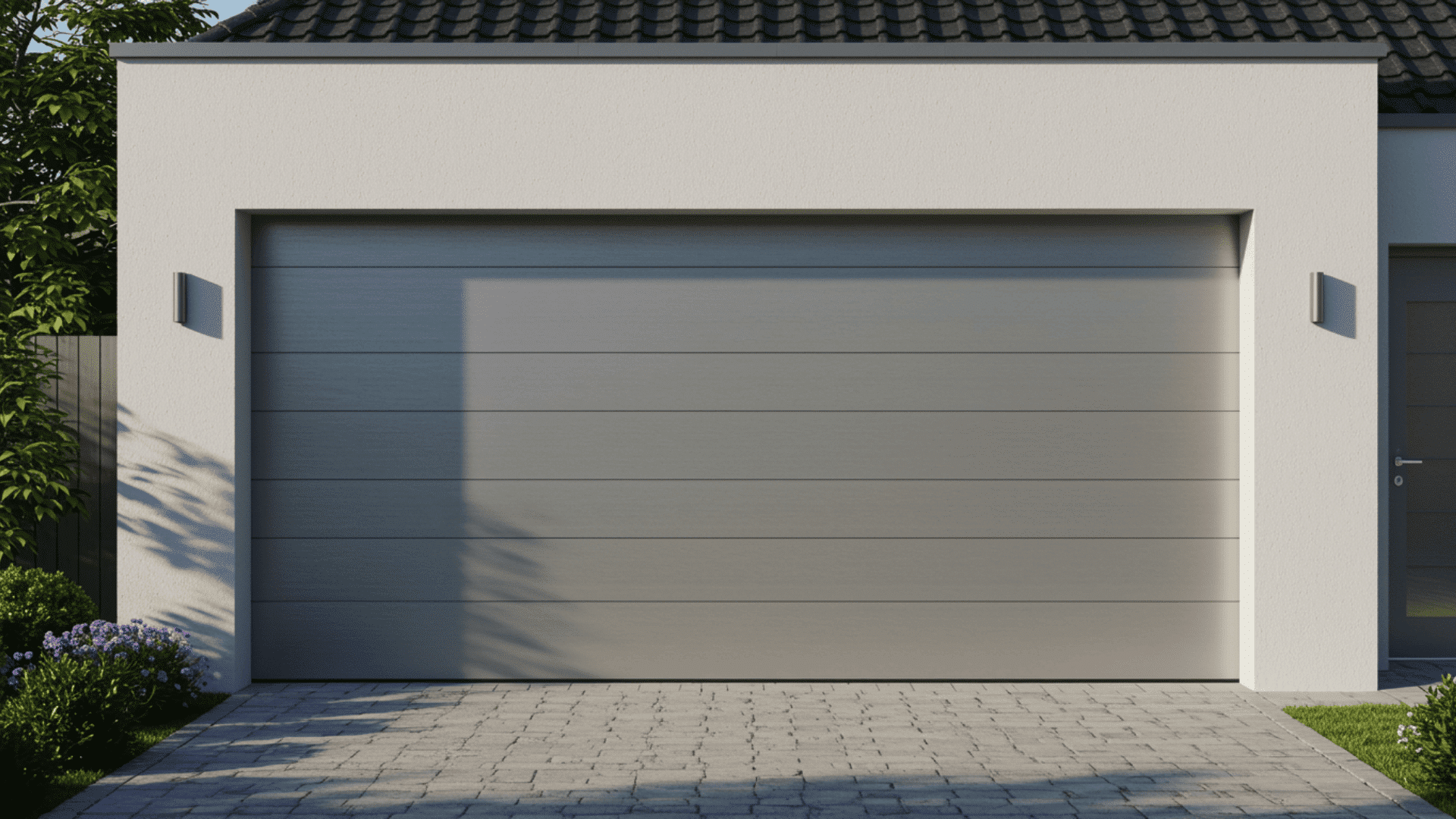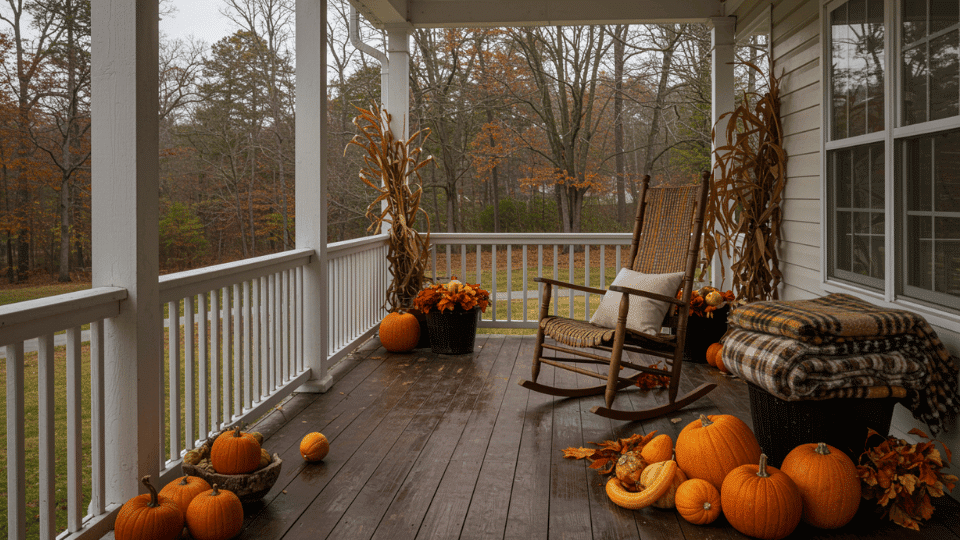I’ve made this mistake more times than I’d like to admit, grabbing wood putty when I needed wood filler, or vice versa.
The wood putty vs wood filler debate might seem trivial, but using the wrong product can ruin your project. These two materials look similar on the shelf, yet they work completely differently.
Wood filler is best for repairs you plan to sand and stain, while wood putty shines as a finishing touch on already-stained surfaces.
The wood filler vs wood putty question comes down to timing and purpose in your project. You’ll learn the key differences, when to use each one, and application tips that’ll save you time and frustration.
The Confusion Between Wood Filler and Wood Putty
At first glance, the wood putty vs wood filler question seems unnecessary; don’t they both just fill holes and cracks? That’s exactly why so many DIYers grab the wrong one.
Wood filler is designed for unfinished wood, applied before you stain or seal. It dries hard, can be sanded smooth, and actually strengthens the repair.
Wood putty, on the other hand, is meant for finished surfaces. You apply it after staining or painting to fix small flaws and nail holes.
The wood filler vs wood putty confusion clears up once you remember this simple rule: filler goes on first, putty goes on last.
What Is Wood Putty?
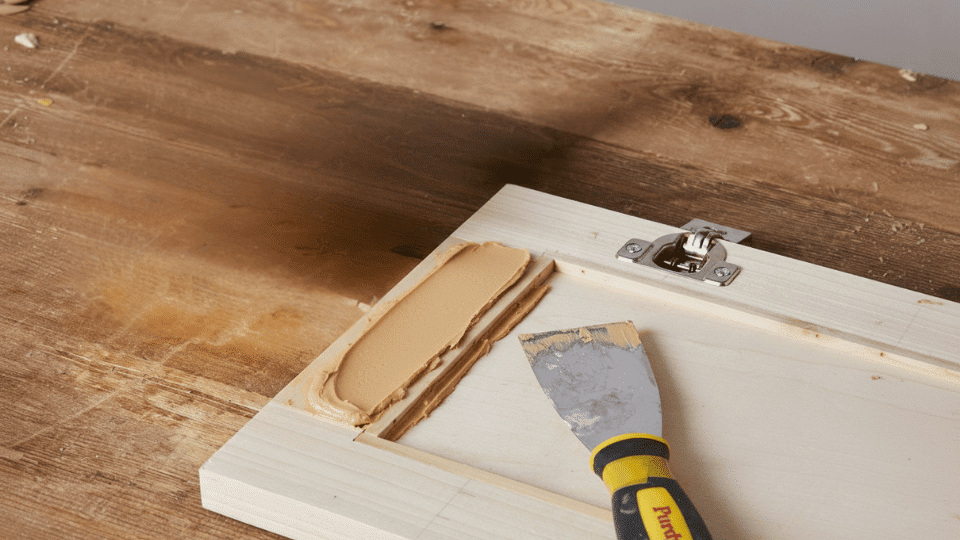
Wood putty is your go-to solution for fixing flaws after you’ve already finished the wood. It’s the cosmetic touch-up product that hides nail holes, small dents, and scratches on stained or painted surfaces.
Think of it as makeup for wood it covers imperfections without changing the structure underneath.
1. Advantages of Wood Putty
- Stays flexible ideal for finished wood and outdoor projects
- Comes in various colors to match stains and finishes
- Long-lasting and weather-resistant
- Easy to apply with a putty knife or even a finger
2. Disadvantages of Wood Putty
- Cannot be sanded or stained once applied
- Slower drying time due to its oil base
- Not suitable for deep holes or raw wood
3. Recommendation
Benjamin Moore offers Benwood Wood Grain Filler, an alkyd/oil-based product that provides a smooth, uniform surface and can be tinted to match stained wood.
It is quick-drying, sands easily, and is recommended for open-grained woods like oak and mahogany.
What Is Wood Filler?

Wood filler is the repair material you use before applying any finish to raw wood. It’s your foundation builder that fills deep holes, cracks, and damaged areas before you stain or paint.
Unlike putty, filler becomes part of the wood itself, hardening into a surface you can sand smooth and treat just like the original material
1. Advantages of Wood Filler
- Can be sanded smooth, stained, or painted for a seamless finish
- Strengthens weak or damaged areas in unfinished wood
- Dries quickly and forms a hard, durable surface
- Ideal for preparing wood before refinishing
2. Disadvantages of Wood Filler
- May crack or shrink outdoors due to lack of flexibility
- Not recommended for already stained or sealed wood
- Some fillers dry lighter or darker than expected, requiring color adjustment
3. Recommendations
Sherwin-Williams provides Minwax Wood Putty, a pre-mixed, non-hardening wood putty known for smooth application, durability, and color matches that complement finished wood surfaces.
It is widely used for minor repairs such as scratches and nail holes, and is praised for its reliability and ease of use.
Key Differences Between Wood Putty and Wood Filler
Understanding the wood putty vs wood filler differences will save you from choosing the wrong product and ruining your repair job.
| Feature | Wood Filler | Wood Putty |
|---|---|---|
| Composition | Water- or solvent-based with wood fibers | Oil-based, stays pliable |
| Drying Process | Dries hard and rigid | Stays flexible after drying |
| Best For | Unfinished, raw wood | Finished, stained, or painted wood |
| Indoor/Outdoor | Indoor use (may crack outdoors) | Outdoor and indoor use |
| Can Be Sanded | Yes,sands smooth | No,remains soft |
| Can Be Stained | Yes, absorbs stain | No,won’t absorb stain |
| Can Be Painted | Yes | Yes |
| Durability | Strong but may shrink or crack outdoors | Weather-resistant, moves with wood |
| Drying Time | Fast (15-30 minutes) | Slower (several hours) |
When to Use Wood Putty vs Wood Filler
Choosing between wood putty vs wood filler depends on whether your wood is finished or unfinished and what kind of repair you’re making.
Use Wood Putty
Wood putty works best for cosmetic fixes on surfaces that already have a finish applied. Think of it as the final touch-up product after you’ve completed staining, painting, or sealing.
Its flexible nature means it won’t crack when wood expands and contracts with humidity or temperature changes.
- You’re fixing minor flaws on finished or stained wood (like furniture, trim, or flooring)
- You need a color-matched repair that blends seamlessly
- The project is outdoors, and flexibility is important for temperature changes
Use Wood Filler
Wood filler is your choice for preparing raw wood before you apply any stain, paint, or sealer. It’s the foundation repair product that strengthens damaged areas and creates a smooth surface.
Since it dries hard like actual wood, you can sand it flush and treat it exactly like the surrounding material.
- You’re repairing unfinished or raw wood before staining or painting
- You want to sand, shape, or stain the repaired area for a smooth finish
- The damage is deeper or structural, such as holes or gouges
Choosing the Right Product for Your Project
The wood putty vs wood filler decision also depends on where you’re working and the final look you want.
Indoor vs Outdoor Repairs
Location matters when choosing between these two products. Outdoor projects face weather extremes, while indoor repairs need a smooth, paint-ready finish.
- Outdoor use: Wood putty handles temperature changes and moisture better without cracking, making it the top choice for deck railings, patio furniture, and exterior trim
- Weather resistance: Putty stays flexible through rain, sun, humidity, and freezing temperatures, moving naturally with the wood as it expands and contracts
- Deck repairs: Always choose putty for exposed outdoor wood like decks, fences, and gazebos that face constant weather exposure
- Indoor use: Wood filler creates a hard, smooth surface that’s ideal for furniture restoration, interior trim work, and cabinets where you need a flawless finish
- Controlled environments: Filler works perfectly in climate-controlled spaces where temperature and humidity stay consistent, allowing it to maintain its rigid structure
- Interior projects: Filler gives you the smooth, sandable surface you need for walls, baseboards, door frames, and any indoor woodwork
Matching Color and Finish
Getting the right color match can make or break your repair. Wood putty comes pre-tinted, while wood filler takes on the color of your stain.
- Pre-colored putty: Choose a shade that closely matches your wood tone since putty won’t accept stain after application
- Stain compatibility: Putty won’t absorb stain at all, so you need to buy the right color upfront or paint over it instead
- Testing filler: Always test stain color on a scrap piece of filled wood first because filler absorbs stain differently than natural wood
- Absorption rates: Filler takes stain but may dry several shades lighter or darker than the surrounding wood depending on its composition
Final Thoughts
Now that you understand the wood putty vs wood filler distinction, you’ll never second-guess yourself at the hardware store again.
The key is remembering when each product enters your workflow. Think of filler as your prep work hero and putty as your finishing touch champion.
The wood filler vs wood putty question isn’t about which one is better, it’s about using the right tool at the right stage.



